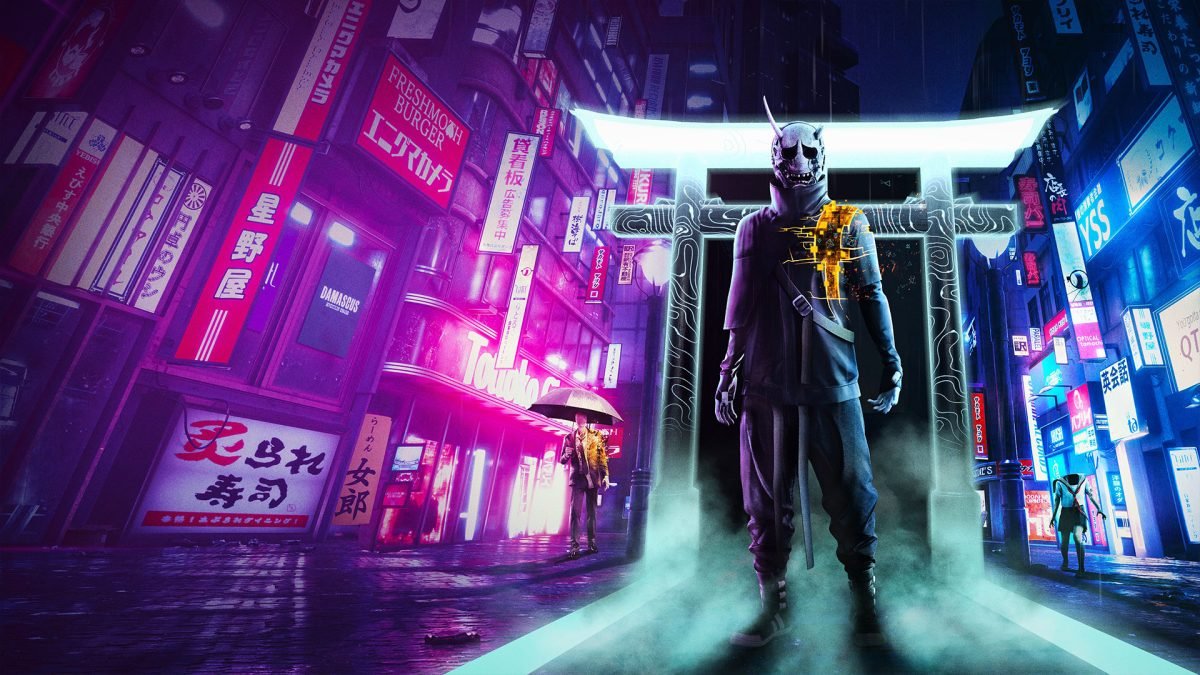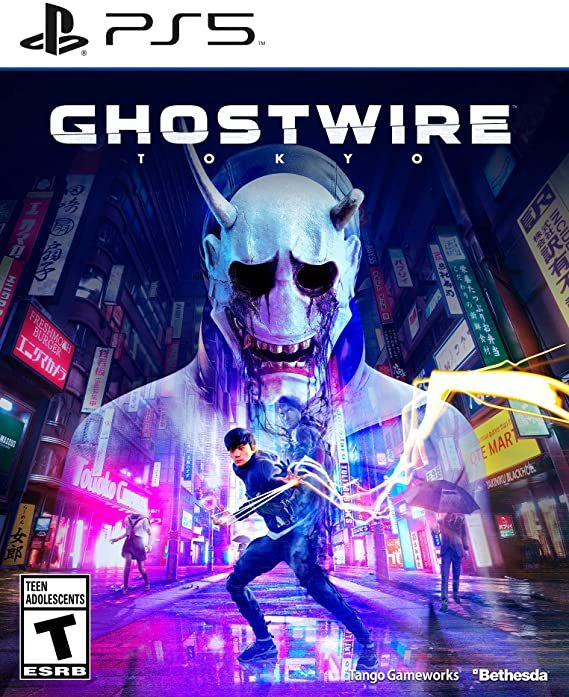I want to like Ghostwire: Tokyo more than I do. Its mix of modern-day Tokyo coupled with Japanese folklore and urban legends makes it compelling to explore, as yokai and neon lights stand side by side amidst a story focused on how people respond to the death of a loved one. Yet it also feels rote and fleeting, as the combat becomes stagnant, and the plot and characterization become thin for a long period. It’s an interesting world, but one that I don’t want to spend a lot of time in.
Ghostwire: Tokyo is a first-person action-adventure game set in Tokyo’s Shibuya district. The opening minutes see Japan’s capital become devoid of human life as a fog rolls through the city, causing humans to vanish, and harmful spirits called Visitors to roam the desolate streets. You play as Akita, a young college student who doesn’t disappear because his body has been possessed by KK, a spirit detective who is trying to put a stop to the supernatural crisis. Akita, meanwhile, is trying to rescue his sister who has been abducted by the same man who is causing all of this madness.
The relationship between Akita and KK is the most interesting aspect of the story, as both hide their pasts from the other while bickering as to what the best approach is. Their dynamic and the banter that results from it is the highlight of the writing, as they come to form a bond that carries the game forward throughout both the main story and the many side missions. At one point, Akita and KK are investigating an urban legend that states that a train will stop at a hidden subway station if only one person is riding it. This results in a delightful debate about whether they count as one person since they both inhabit the same body. Moments like this are common, and it makes Ghostwire: Tokyo feel grounded despite the strangeness all around the city.
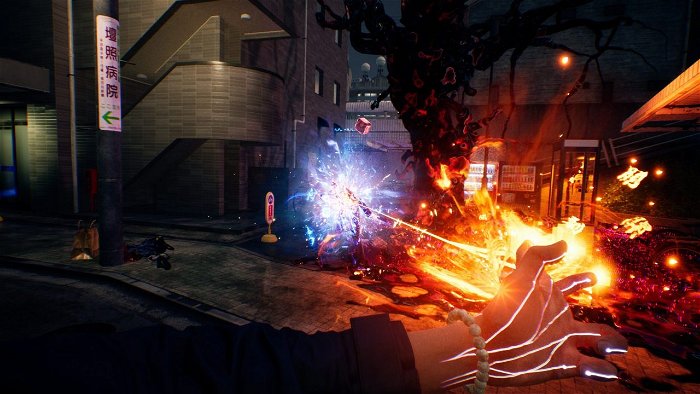
Unfortunately, that relationship is a bright light amidst the otherwise weak writing. Ghostwire: Tokyo is short on characterization. Besides our two main heroes, the other characters, including the villains, are not built up or defined as much as they should be. I want to know more details about KK’s investigation team, or the background on why the main antagonist is doing what he’s doing. I want to spend more time with these characters; the game doesn’t want you to. And the result is a story that feels rushed.
Even in the moments where the story works, such as the ending, I’m not as invested in the outcome because the pacing was off. The opening hours of Ghostwire: Tokyo grabbed me, yet the bulk of the game’s middle chapters were less focused, feeling meandering in comparison. I wish it was, ultimately, executed better, because the setup made me look forward to playing something that didn’t ultimately pay off.
“Ghostwire: Tokyo is short on characterization. Besides our two main heroes, the other characters, including the villains, are not built up or defined as much as they should be.”
At least the world is worth exploring. With no humans to be found, Tokyo’s Shibuya is a sight to behold. Ghostwire: Tokyo looks amazing, and not just from a technical standpoint. The design of the world, from the gigantic shopping malls to the back-alley streets to the overgrown urban forests, kept me interested when the story did not. And you’re not restricted to the streets either, as Akita gains the ability to latch onto Tengu’s hovering above rooftops to jump and glide his way through the Shibuya skyline. The atmosphere is oppressive, even as you cleanse Torii gates to unlock new explorable areas, making your exploration tenser even though this isn’t a horror game.
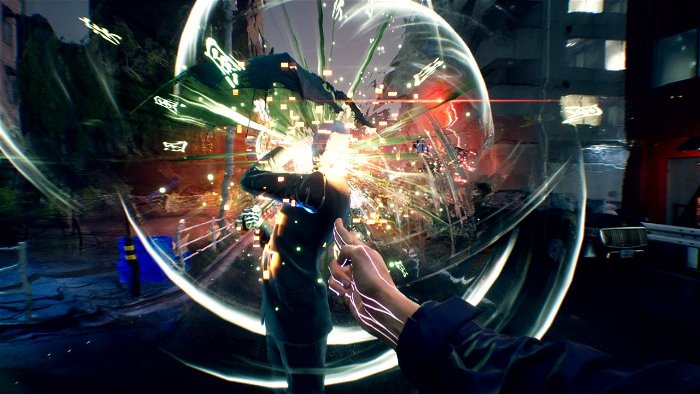
Not that the game doesn’t try to creep you out from time to time, particularly as a result of the Visitors. These evil spirits take many forms, ranging from eyeless office workers to headless students wearing sailor uniforms to scissor wielding kuchisake-onna. These are the enemies you face throughout the game, and Tango Gameworks has done an amazing job making them all feel distinct and surreal. Even though some share the same template — you will see a lot of Visitors holding umbrellas — they never grew old for me.
As for how you defeat these enemies, Akita borrows KK’s powers to perform elemental attacks by making hand signs in the air. While these are magical, they have more in common with guns than they first appear. The wind attack is a pistol, water is a shotgun, and fire is alternatively a rifle or a grenade, depending on whether you charge it or not.
“These are the enemies you face throughout the game, and Tango Gameworks has done an amazing job making them all feel distinct and surreal.”
Alongside these, Akita can use a bow as well as a handful of talismans to disrupt or affect enemies. Damage an enemy enough, and Akita can rip out their exposed spiritual core to finish them off for good. These tools are introduced early, and even though there is a skill tree, the skills you unlock don’t dramatically change or alter each attack. They feel fine to use, but it doesn’t take long before the combat starts to feel too simple.
This is what happens in most fights in Ghostwire: Tokyo: You cast magical attacks at enemies while backing away from them, occasionally stopping to rip out an enemy’s core. While the ghosts and monstrosities themselves have a diverse array of attacks, Akita only has a limited number of them. The upgrades for those attacks do little to change their nature, meaning you will be performing the same actions again and again in fight after fight.
But the repetitive attacks are not the problem, it’s how Akita moves in battle that is the biggest issue. There are no movement options besides walking and sprinting in battle, and the only defensive abilities for Akita are a block to defend himself as well as a stun talisman to stop most enemies in their tracks. The inability to move quickly results in every fight being conducted at mid-range, and the best way to stay in mid-range of enemies is to back away from them while firing off attacks.
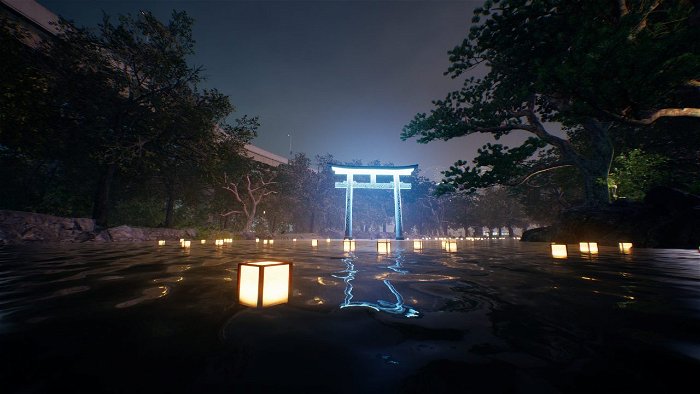
If Ghostwire: Tokyo had a dodge button, even if it was on a cooldown, the fights would be far more dynamic because you could risk diving into close quarters to get past attacks or shifting by an enemy that is about to slice you with a massive pair of scissors to strike at them from behind. But as it stands, fights are stale because they all play out the same way in the end.
Which is a shame, because the animations and visual spectacle of battle are great. I feel powerful when I rip the cores out of enemies, and the hand gestures for each element are very well done. Coupled with the amazing designs of the Visitors themselves, and the combat looks wonderful — it’s a shame it plays as it does.
That sums up how I feel about Ghostwire: Tokyo. I want to explore it, encounter monsters and surprises while blasting them apart with an array of abilities. I want to learn more about the characters, and I want there to be more conversations about how each of them is defined by loss. But the more I played, the more I saw how shallow it was. There are good ideas here, and occasionally Tango Gameworks executes them well. But much like how the residents of Tokyo disappeared into the fog, so too do those moments.
